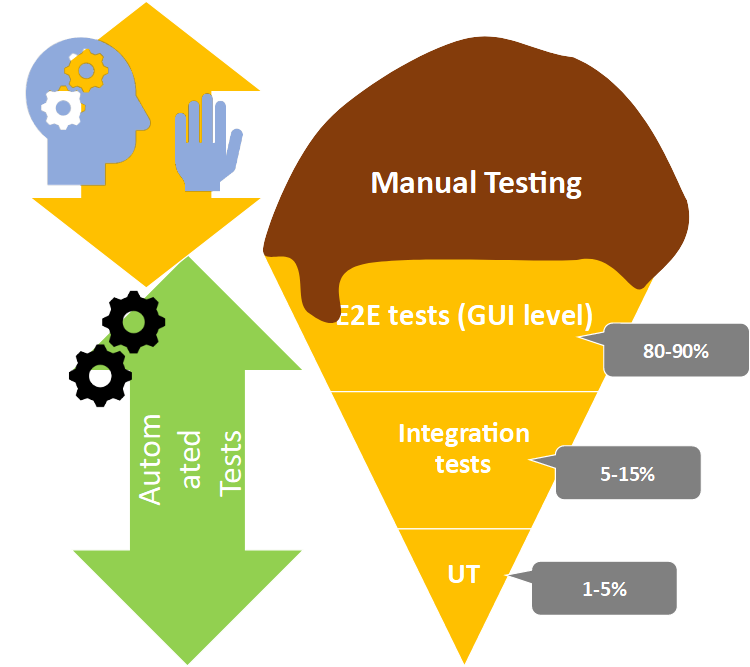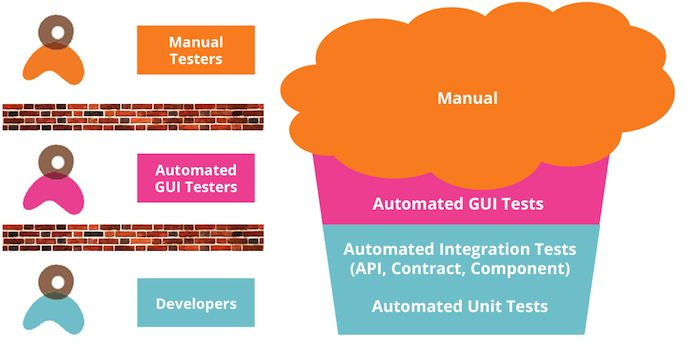Overcoming Anti Patterns in Automation Testing for Effective Software Quality Assurance
Automation testing is a critical aspect of software quality assurance, but it's essential to be aware of common anti-patterns that can hinder its effectiveness. In this article, we will explore two prevalent anti-patterns in automation testing: the "Ice Cream Cone" and the "Cupcake." We will delve into their symptoms, causes, and strategies to overcome them, ultimately enhancing the efficiency and reliability of your testing efforts.
🚦 Is your automated functional testing suffering from the "Ice Cream Cone" antipattern? 🍦
The Ice Cream Cone Antipattern: The Ice Cream Cone antipattern occurs when there is an overemphasis on macro-level UI-driven tests and a lack of micro-level tests. This imbalance can lead to delayed feedback, defects slipping through the cracks, and frustration with test results.
Strategies to Overcome the Ice Cream Cone Antipattern:
1️⃣ Emphasize a balanced test pyramid: Prioritize the creation of lower-level tests, such as unit and integration tests, to catch defects early and provide faster feedback.
2️⃣ Identify critical paths and high-impact UI flows: Focus on comprehensive end-to-end testing for critical paths and frequently executed UI flows.
3️⃣ Automate lower-level tests: Automate micro-level tests, such as unit tests and API tests, to detect issues at the code level and reduce reliance on manual testing.
4️⃣ Invest in proper test data management: Implement a robust test data management strategy to ensure realistic and diverse data sets, improving the reliability and accuracy of tests.
By implementing these strategies, you can address the Ice Cream Cone antipattern and optimize your automated functional testing efforts.
🧁 Are you facing the "Cupcake" antipattern in your automated functional testing? 🍰
The Cupcake Antipattern: The Cupcake antipattern occurs when tests are duplicated across multiple layers, leading to disorganization and inefficiency. This can result in longer release cycles, blame games, and redundant efforts.
Strategies to Overcome the Cupcake Antipattern:
1️⃣ Foster collaboration and communication between developers and testers to clarify testing responsibilities and eliminate duplicated efforts.
2️⃣ Clearly define the scope and purpose of tests at each layer to avoid duplication and ensure efficient use of resources.
3️⃣ Establish guidelines for selecting the appropriate layer for writing specific tests, improving the overall structure of your test suite.
4️⃣ Promote cross-functional knowledge sharing to ensure all team members understand the test landscape and make informed decisions about test coverage.
By addressing the Cupcake antipattern, you can streamline your testing processes, reduce redundancy, and improve overall testing efficiency.
🛠️ By overcoming these anti-patterns and implementing the suggested strategies, you can enhance the effectiveness and efficiency of your automated functional testing efforts. This leads to higher-quality software releases, improved productivity, and increased confidence in your testing process.





